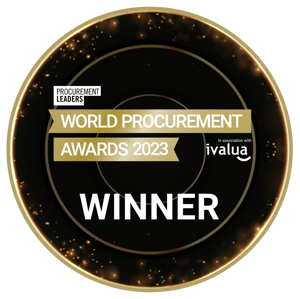U.S. tariff policies have made understanding the financial impact, legal responsibilities, and strategic alternatives increasingly important.
During our recent webinar, my colleagues Johan-Peter Teppala, Mark Sarna, and I shared insights on actionable solutions for organizations facing tariff-related challenges.
Why a Reactive Approach No Longer Works
Data powers modern businesses like oil powered industries in the past. Companies leveraging procurement analytics during disruptions gain a strategic edge in navigating tariffs will be better positioned to navigate the current tariff environment.
Yet many organizations still take a reactive approach, waiting for announcements before assessing the impact. This approach is no longer viable.
Reactive organizations will continually fall behind in an evolving tariff landscape.
Instead, integrating real-time data analytics, scenario planning, and supplier intelligence into your procurement strategy can preemptively mitigate risks.
The Hidden Costs of Tariffs
While direct tariff costs can range from 10% to 30%, the true financial impact extends far beyond these immediate expenses:
The Ripple Effect on Supply Chains
Tariffs introduce ripple effects that impact industries in unexpected ways.
One of the most overlooked but significant costs is electricity.
Energy-intensive industries like aluminum smelting face particularly severe challenges.
Establishing a new aluminum smelting facility in the U.S. takes at least five years, with electricity rates locked in for 20-30 years.
This creates ripple effects through everything from aerospace components to consumer packaging.
Similarly, tariffs on raw materials can inflate costs across entire supply chains, affecting everything from manufacturing to final product pricing.
How Tariffs Shift Power Dynamics
Tariffs also shift power dynamics in supplier negotiations, particularly under Delivered Duty Paid (DDP) terms.
Suppliers may leverage tariffs to inflate margins by 2-3%, passing costs beyond their actual impact. Advanced procurement organizations recognize this and proactively renegotiate terms.
To counteract this, companies must demand greater transparency in cost breakdowns, strengthen contract terms, and implement proactive renegotiation strategies.
Organizations that fail to do so risk overpaying for tariff-related adjustments that may not fully reflect actual supplier costs.
Opportunity Costs of Delayed Action
Perhaps the most significant risk is the competitive disadvantage of slow response.
In a constrained manufacturing environment, the companies that move first to secure alternative sources or renegotiate contracts gain a significant advantage.
Taking decisive action now often yields better results than waiting for perfect analysis, whether that means locking in supplier capacity, securing favorable contract terms, or identifying tariff-exempt sourcing options.
Organizations that hesitate risk losing negotiating leverage and facing higher costs as competitors move swiftly to adapt.
The 4 Terms You Need to Know for Tariffs in Procurement
Rather than viewing tariffs as an insurmountable challenge, leading procurement organizations are developing systematic approaches to transform uncertainty into strategic clarity.
Establish Your Tariff Exposure Baseline
While perfect data is rarely available, most organizations already possess sufficient information to begin meaningful analysis:
- Country of Origin Data: The most reliable indicator of tariff applicability
- Incoterms: Determines liability for tariff payments
- Ship-from Location: A good proxy when the country of origin is unknown
- Supplier Country: Available from vendor masters but potentially misleading
Even incomplete data can provide valuable insights to guide strategy. You can confidently determine liability if you know both countries of origin and the Incoterms.
Implement Dynamic Scenario Planning
Forward-thinking procurement teams are moving beyond static analysis to dynamic modeling that identifies strategic tipping points:
- At what tariff percentage does reshoring become economically viable?
- Which product categories face the highest risk of supply disruption?
- What supplier relationships require immediate renegotiation
- How do various tariff scenarios affect product profitability?
Modern procurement analytics platforms can simulate various tariff rates to identify vulnerable categories and suppliers before announcements become policy.
Proactive Strategies Define Industry Leaders
The ability to anticipate, analyze, and act on tariff-related risks will define the next generation of procurement leaders.
Those who invest in data intelligence, supplier collaboration, and agile decision-making will emerge stronger, more resilient, and more competitive.
Organizations that fail to adapt to disruptions will struggle. Those that react quickly will survive.
However, the best-in-class companies proactively manage and mitigate supply chain risks before they even occur.

